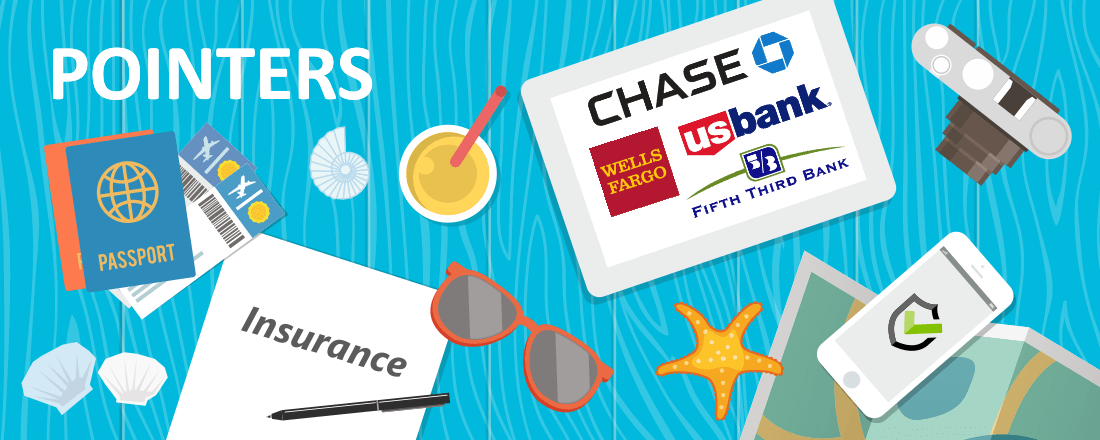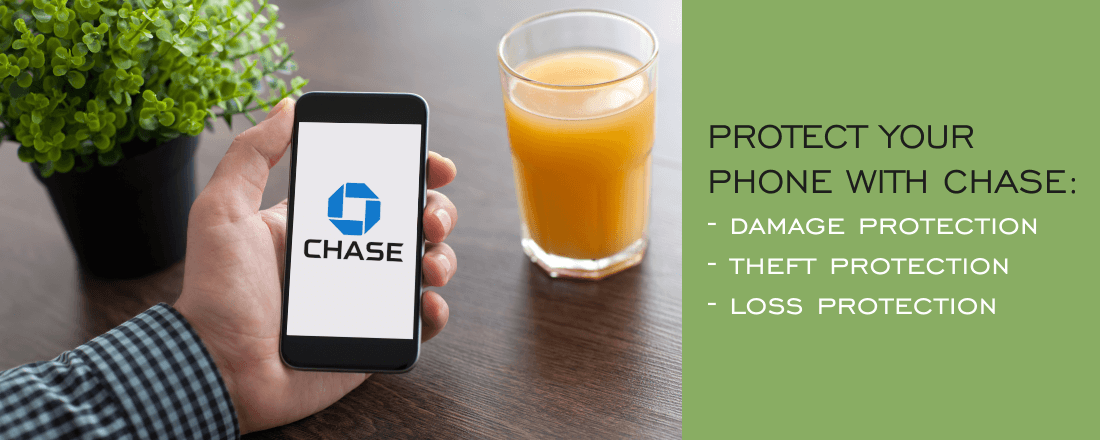
You may be aware of some of the cardholder perks that come with many premium credit cards, such as rental car insurance and lost baggage coverage. But did you know that some cards will reimburse you if your cell phone is stolen or damaged?
This coverage isn’t common, but some big issuers, such as Capital One, Chase, Wells Fargo and U.S. Bank, have cards with some sort of cell phone protections. It may be worth getting one of those cards just to protect your phone. I know I’ve dropped, sat on, cracked or otherwise damaged many smartphones over the years.
Capital One’s Purchase Security
Before getting into the details of proper cell phone coverage, it’s worth noting that all of Capital One’s best cards, including Venture Rewards, VentureOne and Quicksilver, offer Purchase Security. With this benefit, you can get up to $500 if your purchase is damaged within 90 days. That includes cell phones.
It’s not as good as standard cell phone coverage since it’s limited to 90 days, but it’s a nice benefit that comes for free with every Visa Signature issued by Capital One. In fact, it’s a benefit that typically only comes with super-premium Visa Infinite cards.
How It Works
There are four banks that issue cards with cellular phone protection: Chase, Wells Fargo, Fifth Third and U.S. Bank. While Chase, Fifth Third and U.S. Bank offer only one card each with this coverage, all of Wells Fargo’s personal cards include the benefit.
Here’s a brief look at the issuers and their cell phone coverage:
| Issuer | Card | Deductible | Max per claim | Max per year | Number of phones |
|---|---|---|---|---|---|
| Chase | Ink Business Preferred | $100 | $600 | $1,800/3 claims | No limit |
| Wells Fargo | All personal cards | $25 | $600 | $1,200/2 claims | 4 |
| U.S. Bank | Platinum Visa | $25 | $600 | $1,200/2 claims | 4 |
| Fifth Third Bank | Trio | $50 | $200 | $400/2 claims | 3 |
This is the list of Wells Fargo cards that include cell phone protection:
- Wells Fargo Cash Wise Visa Card
- Wells Fargo Rewards Visa Card
- Wells Fargo Platinum Visa Card
- Wells Fargo Propel American Express Card
- Wells Fargo Propel 365 American Express Card
- Wells Fargo Cash Back College Visa Card
- Wells Fargo Home Rebate Visa Card
Despite the variety of issuers offering cell phone protection, the coverage itself is very similar across the board. To protect your phone, you’ll have to pay your monthly bill with a card offering the insurance. If you do, you’ll automatically be covered. Pay-as-you-go and prepaid phones are not covered, and phones must be purchased from an authorized merchant or your service provider.
But what does cellular phone protection get you? With all four issuers you’ll be reimbursed, minus a deductable, if your phone is damaged or stolen. Chase offers slightly broader protection because they also cover lost phones.
With all of these plans, claims must be made within 60 days of the incident. You’ll also have to provide the required documentation within 90 days, which includes a copy of the receipt of sale for your phone, a credit card statement showing payment to your phone service provider and, if applicable, a police report for the stolen phone.
It’s important to note that this coverage is secondary to any other insurance you might have, be it through your phone service provider, homeowners/renters insurance or anything else. While you might get slightly better coverage through those resources, you’ll have to pay for them. You’ll get cell phone protection through your credit card as a free perk, and it acts as primary insurance if you’re otherwise not covered.
The Devil is in the Details
When it comes down to specifics, each issuer is slightly different. With Chase, Wells Fargo and U.S. Bank, you’ll get a maximum payout of $600 per claim, whereas Fifth Third’s max is just $200, which isn’t enough to replace a high-end smartphone. You’ll receive up to the per claim maximum to replace or repair your phone.
Each issuer also has a maximum payout per year, as well as a maximum number of claims. Chase has the best coverage with a $1,800 max and three claims per year. Wells Fargo and U.S. Bank top out at $1,200 and two claims a year, and Fifth Third has the least coverage at just $400 and two claims.
All of the issuers will cover more than one phone, too. You just have to pay for the monthly service bill with your card or add phones to your current service.
Chase bests the competition yet again with no limit on the number of phones covered. This could be a fantastic perk if you run a small business and provide your employees with company cell phones. Wells Fargo and U.S. Bank will both cover up to four phones, and Fifth Third maxes out at three phones.
As I mentioned earlier, the issuers require each claim to reach the deductible before any payout occurs. This is the one area where Chase falls behind the competition. You’ll have to pay $100 out of pocket per claim with Chase, whereas Wells Fargo and U.S. Bank have only a $25 deductible. Fifth Third has a $50 deductible.
What Isn’t Covered
There are limits to what’s covered. They’re largely the same for all of the issuers. Cellular phone protection does not cover:
- Cell phones purchased by someone other the cardholder
- Cell phone accessories other than standard battery provided by the manufacturer
- Cell phones purchased for resale
- Cell phones that are lost or disappear in an unexplained manner without evidence of a wrongful act by a person or persons
- Cell phones under the care and control of a common carrier, including, but not limited to, the U.S. Postal Service, airplanes or delivery services
- Cell phones stolen from baggage unless carried by you and under your personal supervision, or under the supervision of your traveling companion
- Cell phones which have been rented, leased, borrowed or are part of a prepaid or pay-as-you-go plan
- Cosmetic damage to the cell phone or damage that does not impact its ability to make or receive calls
- Damage or theft resulting from abuse, intentional acts, fraud, hostilities of any kind (including, but not limited to war, invasion, rebellion or insurrection), confiscation by the authorities, risks of contraband, illegal activities, normal wear and tear, flood, earthquake, radioactive contamination, or damage from inherent product defects or vermin
- Damage or theft resulting from wrongful delivery or voluntary parting with the cell phone
- Replacement cell phones not purchased from a cellular service provider’s retail or online store
- Taxes, delivery and transportation charges, and any fees associated with the cellular service provider
The Chase card that offers cell protection, the Ink Preferred, is a business card, and they’re the only issuer that covers phones for professional and commercial use. The other banks specify that business phones will not be protected.
Another strangely specific exception is from both Wells Fargo and Fifth Third, who specify that they won’t cover phones stolen from construction sites. You have to wonder what prompted that rule.
U.S. Bank explicitly excludes any electronic issues, such as the inability to charge and other mechanical failures, where there is no evidence of physical damage. It may be more difficult to get them to cover a problem that may have resulted from a dropped phone, such as a failing GPS or Wi-Fi unit.
Which Card Should You Get?
The Chase Ink Business Preferred is the standout of the group, thanks to its excellent earning on everyday purchases, great sign-up bonus and valuable rewards program. The Ink Preferred card is also the best option for paying your phone bill, which you’ll have to do with your card to get coverage. You’ll get three points per dollar spent on phone, internet and cable services, as well as for travel and shipping.
Best of all, the Ink Preferred is an Ultimate Rewards card, giving you a lot of flexibility when it comes to redeeming. Points can be transferred to any of the UR program’s seven airline partners, or you can get a 25 percent bonus if you redeem for airfare, hotels, car rentals or cruises through the Chase travel center.
The card’s 80,000-point sign-up bonus is hard to beat, too. For just $95 a year, this is a great card even without the mobile phone coverage. It doesn’t hurt that by most measures it comes with the best cell insurance, too. While the deductable is larger at $100, it has the highest max payout per year at $1,800, covers an unlimited number of phones and reimburses for lost phones. The other cards cover only damage and theft.

Unfortunately, the Ink Preferred is also a business card and subject to Chase’s frustrating 5/24 rule. That makes it harder to get than the other options. If you’ve opened five accounts in the last 24 months, Chase probably won’t accept your application for this card. You might also be required to prove that you have independent income of some sort, though even a small business, like selling on eBay or Etsy, can qualify.
If you can’t get the Ink card, or you don’t want to pay an annual fee, you should consider the Wells Fargo Cash Wise Visa. While Wells Fargo has a lot of cards that include cell phone coverage, the Cash Wise card is the only one that earns a bonus for phone bills.
To be more specific, the card earns a bonus on all purchases. You’ll get a solid 1.5 percent cash back for every dollar you spend, plus a quick $200 sign-up bonus. Not bad for a no-fee card. If you want free coverage for your cell phone, this card’s a great option.
The U.S. Bank Platinum Visa has equivalent phone coverage to the Wells Fargo offerings, but it’s not a rewards card. It does have a few things going for it, though. There’s no annual fee, and you’ll get 0% APR for 12 months on purchases and balance transfers.
The Fifth Third Bank Trio is a solid cashback card that has no annual fee. While you’ll get three percent back at restaurants and two percent back for gas, groceries and at drug stores, the card comes with the most limited cell insurance. You’ll get a maximum of just $200 per claim.
Final Thoughts
Smartphones are expensive, and we carry them around with us all day. It’s easy to drop and break them, and, unfortunately, they’re an easy target for thieves. It makes sense to protect your phone, but I’ve always balked at adding another $7 a month to my phone bill to get insurance.
Thankfully, there’s no reason to pay for coverage anymore. At the very least, you could get one of the no-fee cards, like the Wells Fargo Cash Wise Visa or U.S. Bank Platinum Visa, that offer up to $600 in coverage per claim. And if you qualify for a business card, you should seriously consider the great Ink Business Preferred from Chase.
And don’t forget, most Capital One cards—including the excellent Venture Rewards card—offer 90 days of protection for all of your purchases. That’s not just for cell phones. You’ll get that coverage for everything from a kitchen stove to a set of golf clubs.

